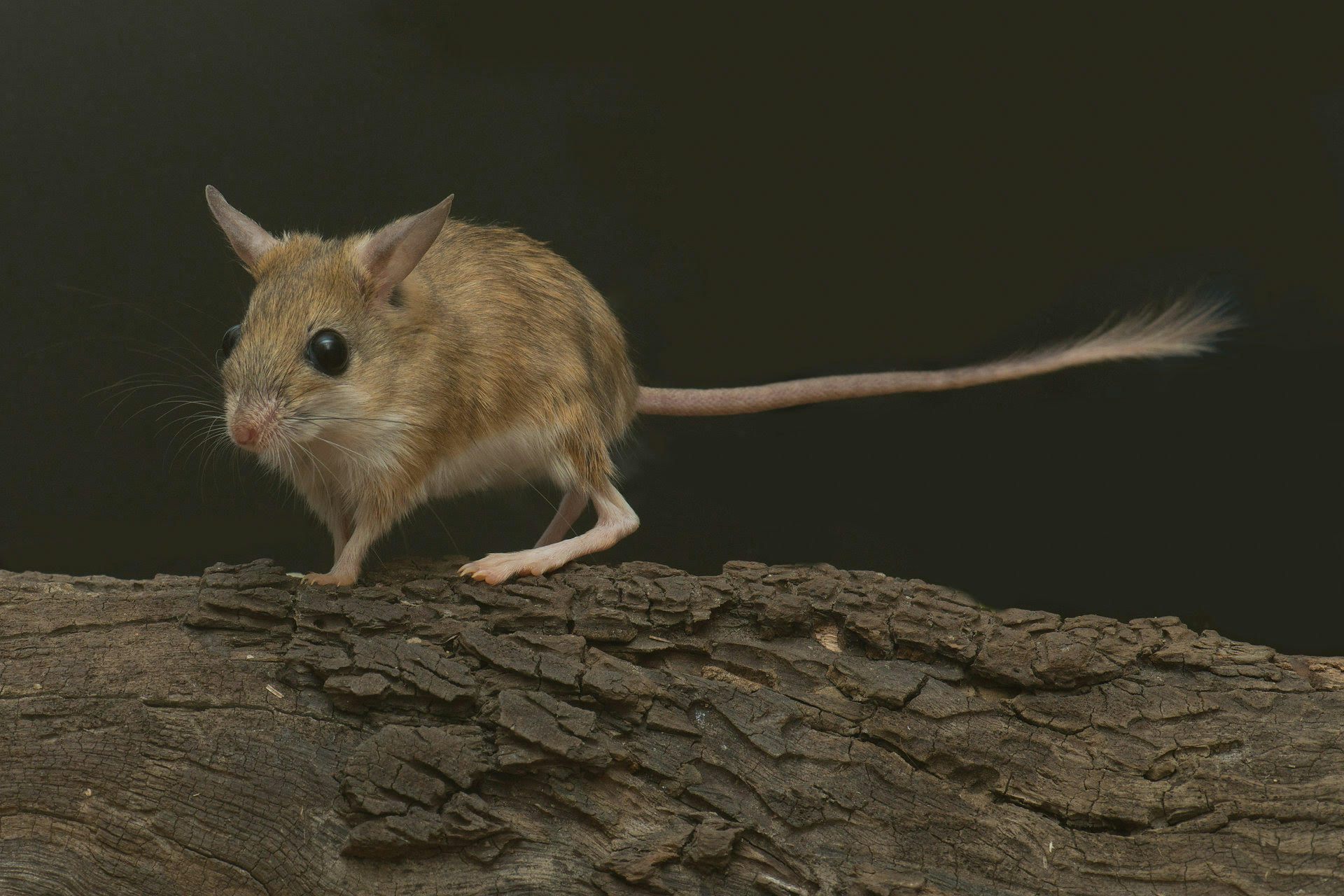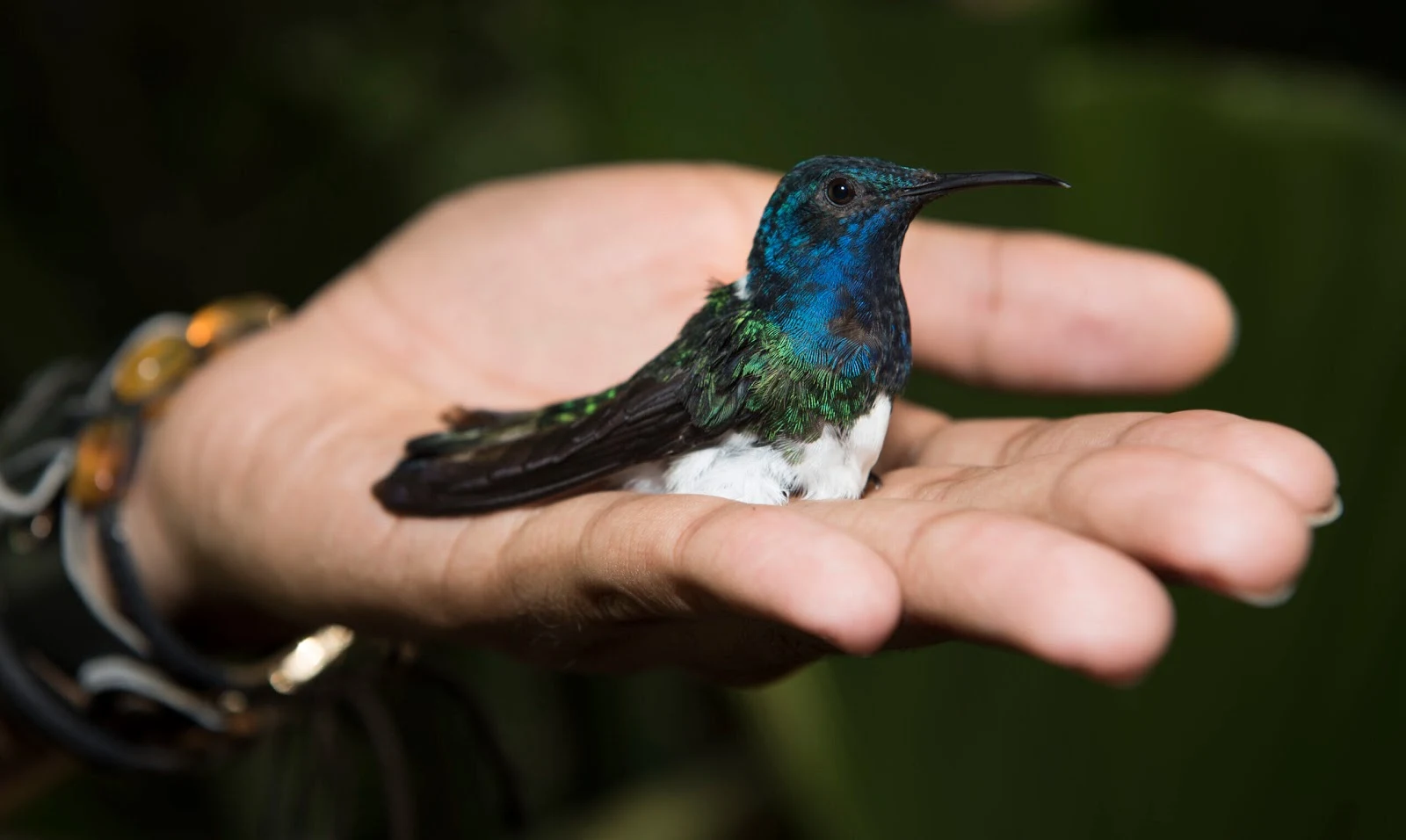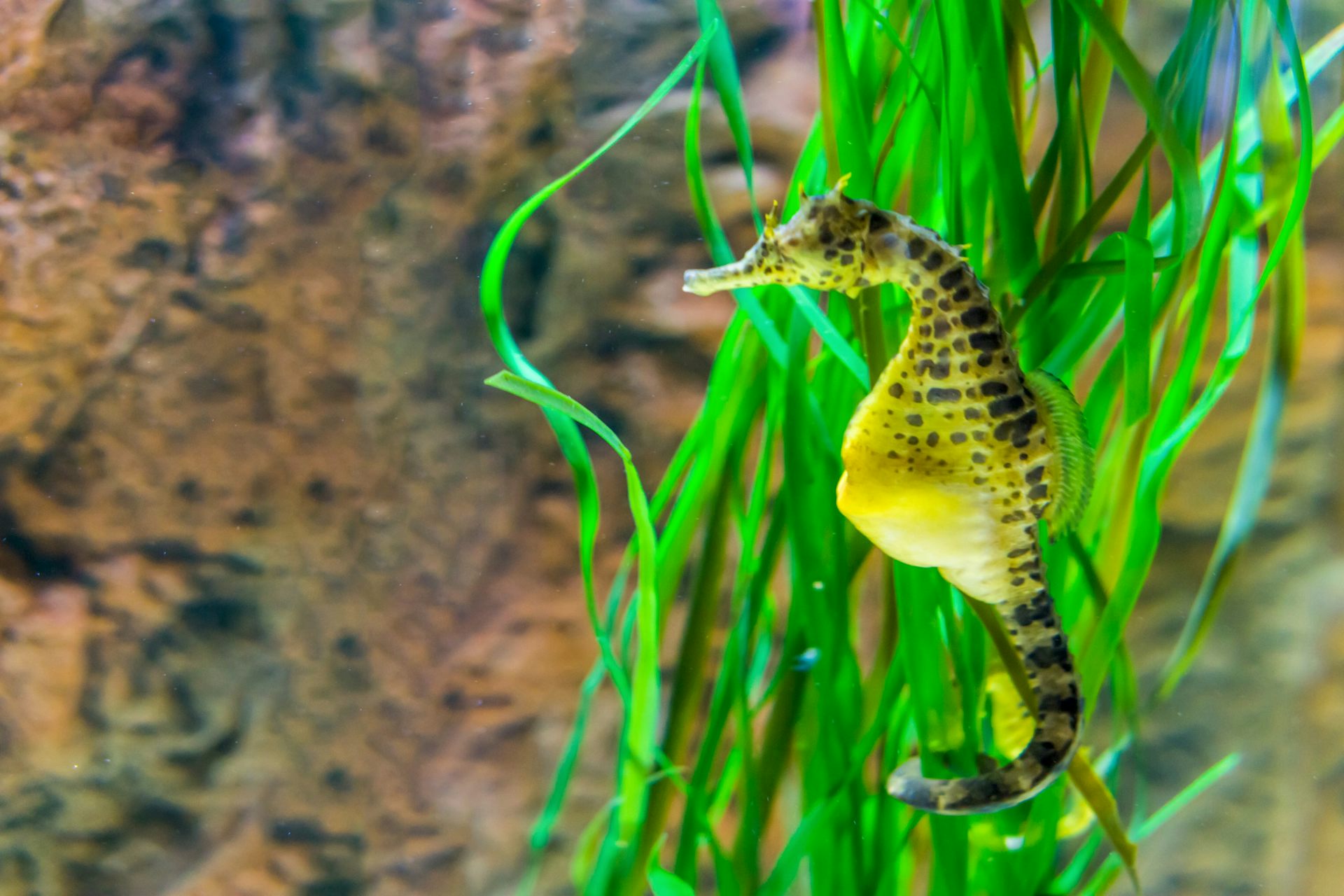Religion, Creationism, evolution, science and politics from a centre-left atheist humanist. The blog religious frauds tell lies about.
Friday, 9 September 2022
Unintelligent Designer News - When Yesterday's Soltion to the Problem You Created Earlier, is Today's Problem Waiting To Be Solved
A case in point, but one with a slight twist, is the fact that one in five females of the white-necked jacobin hummingbird, Florisuga mellivora, have bright 'male' plumage instead of the usual duller ‘female’ plumage, however, they still have the lighter female bodyweight and have female patterns of behaviour.
Males of the species have dazzling blue-and-white plumage, as do all juveniles. Males are also aggressive in defending their territory and food sources. About 80% of the females develop a duller, green and white plumage as they mature. This pattern, where males are brightly coloured and the females are duller is common in birds, where males display to defend their territory and to attract a mate, while the females which don’t need to display to attract a mate, can afford to be duller and more difficult for predators to see.
So ,the question is, why do about 20% of F. melliflora hummingbird develop a 'male' plumage while retaining a lighter female body and behaviour? This was the question scientists from Cornell University, Ithaca, NY, USA, Columbia University, New York, NY, USA and the University of Washington, Seattle, WA, USA set out to answer.
The answer turned out to be an unusual case of mimicry, where the females are not mimicking another species for protection, but males of the same species. This works because the males are bullies and cowards, and tend to pick on the light-weight females while avoiding picking a fight with other males and with juveniles (which also seem to be getting protection against the cowardly males by, unusually for birds, having adult ‘male’ plumage as juveniles).
As the news release from Washington University explains:
Thursday, 8 September 2022
Transitional Species News - Yes! It's More Transitional Fossils!
The bad news for the failing Creationist cult just continues to pile up. Not only do scientists regularly find fossils of 'transitional organisms' coming partway between an earlier taxon and a later one, but now they have found evidence, in 1.9 billion-year-old micro-fossils, of transition between the earlier, prokaryote cells and the more complex eukaryote cells that multicellular organisms eventually evolved from.
To conform to Creationist superstitions, though, they should not be that old and they should not be transitional between major taxons. The yawning gap between what Creationists are obliged to believe and what science shows to be true just got a bit wider.
The discovery was made by a research team from Tohoku University, Japan, and the University of Tokyo, Japan, who analysed micro-fossils from the Gunflint Formation which traverses the northern part of Minnesota, USA into Ontario, Canada, along the north-western shores of Lake Superior.
The news release from Tohoku University explains the finding and its significance:
Tuesday, 6 September 2022
Liz Truss - The Next Failure in Waiting
As I was writing this, Mary Elizabeth (Liz) Truss was appointed Prime Minister (PM) of the UK Government to replace Boris Johnson. Johnson was forced out of office by Tory MP's who were becoming increasingly embarrassed by his cavalier approach to the truth, disregard for the rules of decent parliamentary behaviour and blatant attempts to mislead parliament, which was costing them electoral support.
For those readers not familiar with British politics and our ‘constitutional monarchy' and unwritten constitution, here is a brief explanation of how government here works:
Although not written down in the same document, our constitution consists of traditions built up over many years. Some parts are governed by specific Acts of Parliament, such as the Act of Settlement by which the monarchy was restored following Cromwell's Commonwealth, which limits the power of the monarch and gives power to the government, and the Representation of the People Act, by which our electoral rules were laid down and the 1910 Parliament Act, which restricts the power of the appointed Upper Chamber (The House of Lords). Parliamentary procedures are based on the idea that honourable people will act honourably and are contained in a book known as Erskine May, after the then parliamentary library clerk who wrote it.
By the strange rules of UK politics, the head of government (PM) is not elected directly but is appointed by the monarch and asked to 'form a government'. The government can then only govern if it can command a majority in the House of Commons. It can fall by either losing a vote of confidence, or by being 'denied supply', i.e., failing to get the annual Finance Bill approved. Traditionally, it will also fall if it fails to get a major piece of legislation through the House, especially a measure from the manifesto on which it was elected, although that is more a matter of honour than of law. The Finance Bill gives the government legal authority to tax and spend, without which it cannot legally pay ministers and MPs, the Civil Service, the Armed Forces, the police or the judiciary and major spending departments and agencies such as the National Health Service (NHS), The Highways Agency, The Prison Service, Border Security and Air Traffic Control, would cease to operate.
The Prime Minister is normally the leader of the party with the most MP's in the Commons, so, to retain his/her position, he/she must have the support of that party because to lose the leadership would make it almost impossible to win a confidence or supply issue. Technically, the monarch can ask anyone to form a government, even a non-elected person such as a member of the House of Lords. The only test is to command the support of the Commons, i.e., to win a vote of confidence. Therefore, even if a government falls, it does not mean an automatic General Election because the monarch can ask someone else to try to form a government. In 2010, when no party had an overall majority in the House, David Cameron could only form a government by including members of the Liberal Democrats in his government (a Coalition) and making the leader of the Liberal Democrats, Nick Clegg, his deputy Prime Minister.
Malevolent Designer News - How Creationism's Favourite Pestilential Malevolence Might Soon Try for Another Pademic
Creationism’s pestilential designer never tires of designing new ways to make us sick and die, or modifying old ways by improving their ability to harm us. It normally uses one of five different families of virus, its favourite until recently has been the Orthomyxoviridae family that includes the influenza virus, but it made good use of the Coronaviridae family recently with SARS and MERS as practice runs, and eventually SARS-CoV-2 that caused the on-going COVID-19 pandemic.
But it also has several other families in stock, so to speak, and can modify any of them to cause the next pandemic.
That's if you believe the Creationist claims that all life is designed by a magic designer and any change in its genome can only occur with divine intervention to make it happen. For incomprehensible reasons, they would rather we thought of their putative designer god as a pestilential malevolence than accept the scientific Theory of Evolution.
The following article from The Conversation by four Australian experts, outlines five different virus families from which the cause of the next pandemic could come. It was written by Professor Allen Cheng, Professor in Infectious Diseases Epidemiology, Monash University, Victoria, Australia, Dr. Andrew van den Hurk, Medical Entomologist, The University of Queensland, Australia Associate Professor Cameron Webb, Clinical Associate Professor and Principal Hospital Scientist, University of Sydney, NSW, Australia, and Professor Damian Purcell, Professor of virology and theme leader for viral infectious diseases, The Peter Doherty Institute for Infection and Immunity, Melbourne, Victoria, Australia.
It is reprinted here under a Creative Commons licence, reformatted for stylistic consistency. The original article can be read here.

5 virus families that could cause the next pandemic, according to the experts
Allen Cheng, Monash University; Andrew van den Hurk, The University of Queensland; Cameron Webb, University of Sydney, and Damian Purcell, The Peter Doherty Institute for Infection and Immunity The CSIRO has delivered a comprehensive report on how we should prepare for future pandemics.
The report identifies six key science and technology areas such as faster development of vaccines and onshore vaccine manufacturing to ensure supply, new antivirals and ways of using the medicines we already have, better ways of diagnosing cases early, genome analysis, and data sharing.
It also recommends we learn more about viruses and their hosts across the five most concerning virus families. These causes of disease could fuel the next pandemic.
We asked leading experts about the diseases they can cause and why authorities should prepare well:
1. Coronaviridae
COVID-19, Middle East respiratory syndrome (MERS), severe acquired respiratory syndrome (SARS)
The first human Coronaviruses (229E and OC43) were found in 1965 and 1967 respectively. They were low-grade pathogens causing only mild cold-like symptoms and gastroenteritis. Initial understanding of this family came from study of related strains that commonly infect livestock or laboratory mice that also caused non-fatal disease. The HKU-1 strain in 1995 again did not demonstrate an ability to generate high levels of disease. As such, coronaviridae were not considered a major concern until severe acquired respiratory syndrome (SARS-1) first appeared in 2002 in China.
Coronaviridae have a very long RNA genome, coding up to 30 viral proteins. Only four or five genes make infectious virus particles, but many others support diseases from this family by modifying immune responses. The viruses in this family mutate at a steady low rate, selecting changes in the outer spike to allow virus entry into new host cells.
Coronaviridae viruses are widespread in many ecological niches and common in bat species that make up 20% of all mammals. Mutations spread in their roosts can spillover into other mammals, such as the civet cat, then into humans.
Coronaviridae genome surveillance shows an array of previously unknown virus strains circulating in different ecological niches. Climate change threatens intersections of these viral transmission networks. Furthermore, pandemic human spread of SARS-CoV-2 (the virus that causes COVID) has now seeded new transmissions back into other species, such as mink, cats, dogs and white-tailed deer.
Ongoing viral evolution in new animal hosts and also in immune-compromised HIV patients in under-resourced settings, presents an ongoing source of new variants of concern.
– Damian Purcell
Read more:
Long COVID: How researchers are zeroing in on the self-targeted immune attacks that may lurk behind it
2. Flaviviridae
Dengue fever, Japanese encephalitis, Zika, West Nile fever
The flaviviridae family causes several diseases, including dengue, Japanese encephalitis, Zika, West Nile disease and others. These diseases are often not life-threatening, causing fever, sometimes with rash or painful joints. A small proportion of those infected get severe or complicated infection. Japanese encephalitis can cause inflammation of the brain, and Zika virus can cause birth defects.
While all these viruses may be spread by mosquito bites, when it comes to each individual virus, not all mosquitoes bring equal risk. There are key mosquito species involved in transmission cycles of dengue and Zika virus, such as Aedes aegypti and Aedes albopictus, that may be found in close to where people live. These mosquitoes are found in water-holding containers (such as potted plant saucers, rainwater tanks), water-filled plants, and tree holes. They also like to bite people.
The mosquitoes that spread these viruses are not currently widespread in Australia; they’re generally limited to central and far north Queensland. They are routinely detected through biosecurity surveillance at Australia’s major airports and seaports. With a rapid return to international travel, movement of people and their belongings may become an ever-increasing pathway of introduction of the diseases and mosquitoes back into Australia.
Different mosquitoes are involved in the transmission of West Nile virus and Japanese encephalitis. These mosquitoes are more likely to be found in wetlands and bushland areas than backyards. They bite people but they also like to bite the animals most likely to be carrying these viruses.
The emergence of Japanese encephalitis, a virus spread by mosquitoes between waterbirds, pigs, and people, is a perfect example. Extensive rains and flooding that provide idea conditions for mosquitoes and these animals create a “perfect storm” for disease emergence.
– Cameron Webb & Andrew van den Hurk
Read more:
Japanese encephalitis virus has been detected in Australian pigs. Can mozzies now spread it to humans?
3. Orthomyxoviridae
Influenza
Before COVID-19, influenza was the infection most well-known for causing pandemics.
Influenza virus is subdivided into types (A, B, and rarely C and D). Influenza A is further classified into subtypes based on haemagglutinin (H) and neuraminidase (N) protein variants on the surface of the virus. Currently, the most common influenza strains in humans are A/H1N1 and A/H3N2.
Zoonotic infection occurs when influenza strains that primarily affect animals “spill over” to humans.
Major changes in the influenza virus usually result from new combinations of influenza viruses that affect birds, pigs and humans. New strains have the potential to cause pandemics as there is little pre-existing immunity.
Since the beginning of the 20th century, there have been four influenza pandemics, in 1918, 1957, 1968, and 2009. In between pandemics, seasonal influenza circulates throughout the world.
Although influenza is not as infectious as many other respiratory infections, the very short incubation period of around 1.4 days means outbreaks can spread quickly.
Vaccines are available to prevent influenza, but are only partially protective. Antiviral treatments are available, including oseltamivir, zanamivir, peramivir and baloxavir. Oseltamivir decreases the duration of illness by around 24 hours if started early, but whether it reduces the risk of severe influenza and its complications is controversial.
– Allen Cheng
Read more:
My year as Victoria's deputy chief health officer: on the pandemic, press conferences and our COVID future
4. Paramyxoviridae
Nipah virus, Hendra virus
Paramyxoviridae are a large group of viruses that affect humans and animals. The most well known are measles and mumps, as well as parainfluenza virus (a common cause of croup in children).
Globally, measles is a dangerous disease for young children, particularly those who are malnourished. Vaccines are highly effective with the measles vaccine alone estimated to have saved 17 million lives between 2000 and 2014.
One group of paramyxoviruses is of particular importance for pandemic planning – henipaviruses. This includes Hendra virus, Nipah virus and the new Langya virus (as well as the fictional MEV-1 in the film Contagion). These are all zoonoses (diseases that spill over from animals to humans)
Hendra virus was first discovered in Queensland in 1994, when it caused the deaths of 14 horses and their horse trainer. Infected flying foxes have since spread the virus to horses in Queensland and northern New South Wales. There have been seven reported human cases of Hendra virus in Australia, including four deaths.
Nipah virus is more significant globally. Infection may be mild, but some people develop encephalitis (inflammation of the brain). Outbreaks frequently occur in Bangladesh, where the first outbreak was reported in 1998. Significantly, Nipah virus appears to be able to be transmitted from person-to-person though close contact.
– Allen Cheng
Read more:
What is this new Langya virus? Do we need to be worried?
5. Togaviridae (alphaviruses)
Chikungunya fever, Ross River fever, Eastern equine encephalitis, Western equine encephalitis, Venezuelan equine encephalitis
The most common disease symptoms caused by infection with alphaviruses like chikungunya and Ross River viruses are fever, rash and painful joints.
Like some flaviviruses, chikungunya virus is thought to be only spread by Aedes aegypti mosquitoes in Australia. This limits risks, for now, to central and far north Queensland.
Many different mosquitoes play a role in transmission of alphaviruses, including dozens of mosquito species suspected as playing a role in the spread of Ross River fever. Many of these mosquitoes are commonly found across Australia.
But what role may these local mosquitoes play should diseases such as eastern equine encephalitis or western equine encephalitis make their way to Australia? Given the capacity of our home-grown mosquitoes to spread other alphaviruses, it is reasonable to assume they would be effective at transmitting these as well. That’s why the CSIRO report notes future pandemic preparation should work alongside Australia’s established biosecurity measures.
– Cameron Webb & Andrew van den Hurk
Read more:
How can the bite of a backyard mozzie in Australia make you sick?
Monday, 5 September 2022
Space News - First Exoplanet Photo. No Life Yet, But It's Only a Matter of Time
NASA's James Webb Space telescope, which is performing much better than expectations, has just produced the first image of an exoplanet. The planet, HIP 65426b, is a gas giant rather like Jupiter, orbiting HIP 65426. It's presence had been inferred from data in 2017.
As a gas giant, it is not suitable for living organisms to have evolved but, with so many exoplanets being discovered, with over 5,000 discovered so far, and so many stars with potential planetary systems, it can't now be long before signs of life are detected on one or more of them.
When that happens, of course, it will destroy any remaining arguments from Creationists that the probability of a self-replicating molecule arising by chance is too small to be credible as an explanation for how life got going on Earth. It will show that, if the conditions are right, chemistry and physics alone are quite capable of producing that and the probability of a planet with those conditions being discovered, increases with every new exoplanet discovered.
The chances of finding such a planet are greater the closer the planetary system is to Earth for the simple reason that telescopes such as the James Webb, see distant objects as they were when the light left them, so a planet say, 10 billion lightyears away, will appear as it was 10 billion years ago. We know it took the Universe 10-11 billion years to give rise to Earth before life could get going some 500 million years later, so distant object may not have had time when we are seeing them, to have reached that stage. Closer objects will have had more time.
The image from the James Webb Space Telescope, and its significance is explained in an open access article in The Conversation by Professor Jonti Horner, Professor (Astrophysics), University of Southern Queensland, Australia. The article is reprinted here under a Creative Commons licence, reformatted for stylistic consistency. The original article can be read here.
Covidiot News - Massive Success for the Pro-Trump, Self-Genocide Campaign
More evidence of the astonishingly stupid, but highly successful pro-Trump antivaxx campaign against the COVID-19 vaccinations was produced today in the form of evidence that the COVID-19 pandemic death rate in the USA produced a significant fall in life-expectancy in 2021, continuing a sharp fall in 2020. It also showed how there were persistent disparities in life expectancy by race and ethnicity.
The antivaxx campaign came about in support of the then president, Donald Trump, who, realising he was out of his depth with the science, but due to his narcissistic personality disorder, was incapable of admitting it, panicked and set about politicizing the pandemic, threatening and vilifying scientists who tried to advise him and pressurizing officials to supress bad news and provide disinformation.
He first declared the pandemic to be a hoax, then to be a mild illness that would be over by April (2020) and which could be prevented with wackadoodle, untested 'preventative' chloramphenicol. This subsequently turned out to not only be ineffective in preventing infection or minimising the symptoms but was positively dangerous.
At one point, in a comical pretence of medical expertise that would have been funny if it hadn’t been so seriously stupid, the fool even suggested drinking surface disinfectants or inserting a UV light source into the body to cure the disease. Soon, wearing face-covering and social distancing became political acts, as did getting vaccinated when the vaccines were produced. Evangelical preachers preached against face-masks and for the right to continue to hold super-spreader events in their churches, and Trump's election rallies in which face-coverings were discouraged, became serious super-spreader events in their own right.
Consequently, when the Omicron wave hit, the death toll became overwhelmingly of unvaccinated people in Republican-leading areas of America, to the extent that some commentators referred to it as a self-inflicted genocide of the most gullible, as the Republicans Party became possibly the first political party in history with policies seemingly designed to kill their own supporters and with supporters who believed that risking the lives of themselves, their families and society at large was the patriotic thing to do.
All to save the orange buffoon’s face.
Saturday, 3 September 2022
Human Evolution News - We have More Neanderthal DNA Now Than They Ever Had
With almost everyone living north of the Saharah having up to 4% Neanderthal DNA, this means the 8 billion modern humans alive today have between them more DNA that the entire Neanderthal species ever had. So much for the extinction of our close cousins, Homo neanderthalensis.
This is one of the surprising facts about Neanderthals revealed by Peter C. Kjærgaard, Professor of Evolutionary History and Director, Natural History Museum of Denmark, University of Copenhagen, Mark Maslin, Professor of Earth System Science, University College, London, UK and the Natural History Museum of Denmark, and Trine Kellberg Nielsen, Associate Professor, Department of Archeology and Heritage Studies, Aarhus University, Aarhus, Denmark, in an open access article in The Conversation recently.
Neanderthals lived in Eurasia for about 400,000 years, compared to the modern humans 40,000 year occupation. During that time, they evolved to adapt to a changing Northern Eurasian climate as the ice sheets expanded then retreated. By the time moderns arrived on the scene they had already begun to diversify into European and Asia subspecies and the Asian branch had already met, coexisted and interbred with a third species, the Denisovans, who have still to be given a definitive biological name.
Neanderthals probably evolved from an archaic hominin, H. heidelbergensis, itself a descendant of H. erectus which migrated out of Africa at an earlier date, although there has been an attempt to simplify the hominin evolutionary tree recently with a newly-named species, H. bodoensis, replacing several archaic species by regarding them as regional and temporal variants of H. bodoensis. Other authorities are continuing with the earlier nomenclature.
Why they became extinct is still something of a mystery with various contributory causes suggested, from inbreeding due to small population size and even smaller, isolated family groups, an inability to adapt to the changing climate at the end of the ice age, the fact that modern humans had domesticated dogs giving them an advantage when hunting, displacement and extermination by expanding modern humans, to simply being subsumed into the large and increasing modern population and subsequent elimination of all but the advantageous genes we inherited from them. In other words, they never did go extinct and live on in us.
Here is how the three authors in The Conversation see Neanderthals as fitting into the Hominin tree, and the contribution they made to the non-African part of modern humanity. Their article is reprinted here under a Creative Commons license, reformatted for stylistic consistency. The original article can be read here:
God the Great Abortionist

Religious fundamentalists in the USA recently scored what might turn out to be a Pyrrhic victory in the struggle over a woman's right to choose whether to allow her body to be used to grow a new person or not. In a historic ruling, the right-leaning Supreme Court of the United States (SCOTUS), recently stuffed with Republican placemen and women ruled that since there was no traditional right to an abortion, the states were free to regulate and restrict abortions.
This has led to about a third of American women losing the right to have an unwanted pregnancy terminated, in some states regardless of how the pregnancy occurred or the effects continuing with it might have on the health of the woman. So, in these states, for example an underage girl who was raped or the victim of incest will be obliged to carry the baby to term, and some states are even attempting to make it illegal to get help in another state where abortion is still decriminalised.
But what is this objection to abortion and the right of women to control their own bodies based on?
As we might expect with beliefs that lead to limitations on human rights, it is based on Christian fundamentalism and two things in particular:
Evolution News - How Australia and New Guinea Got Their Diverse Populations of Rodents

I've remarked before about how well the Theory of Evolution as an explanation for the biodiversity in animals, plants and fungi we see all around us, consistently meshes with other strands of science. For example, plate tectonic and the timing of the splits and collisions of land masses that have occurred exactly coincides with the deduced evolutionary divergence in major branches of the tree of life, so explaining the relationships between species on unconnected land masses such as Africa and South America or Europe and North America.
Here we have an account of the colonisation of Australia and New Guinea and neighbouring islands by rodents, and their evolutionary diversification, that exactly meshes with the rise and fall of sea level during cycles of glaciation and glacial regression, and with known periods of mountain building in New Guinea that transformed it from a group of small islands into a single large mountainous island.
The study, led by Dr. Emily Roycroft, a postdoctoral research fellow with the Australian National University's Division of Ecology and Evolution, Research School of Biology, Acton, ACT, Australia, and Pierre-Henri Fabre, of the Institut des Sciences de l’Evolution, Université de Montpellier, Montpellier, France, with colleagues from the Australian National University, and the Science Department, Museums Victoria, Melbourne, Victoria, Australia, is published in the journal,Current Biology. Sadly, the main body of the paper is behind a paywall, despite the journals claimed support for open access publishing. However the abstract is available here.
Lead author, Dr Emily Roycroft has also written about their research in the open access online magazine The Conversation which, if you want factual, objective analysis of news, is well worth reading. Her article is reproduced here under a Creative Commons license, reformatted for stylistic consistence. The original article can be read here.
Stunning Images from NASA Courtesy of the James Webb Space Telescope
In a departure for this blog, this has little or nothing to do with religion, Creationism or even politics, save only that the reality of the Universe, as shown in this stunning image compiled from data supplied by NASA's James Webb space telescope, bears no relationship to anything described or even hinted at in the Bible.
It is, in fact, an image which confirms Einstein's General Theory of Relativity in that it is produced by gravitational lensing, just as Einstein predicted, back in 1912 when he first announced his discovery. This is the way light can be bent by the gravity of a massive object such as a black hole, a neutron star or, in this case an entire galaxy (SPT-S J041839-4751.8).
Unintelligent Design - Seahorses Show How Creationism's Amnesiac Designer Creates Different Solutions for the Same Problem
Like an amnesic, Creationism's putative intelligent [sic] designer often forgets what it designed earlier and starts again. It did it with all the different forms of wing for flying organisms, for example, and with the seahorse and pipefish family, which it bizarrely designed so the male would be the pregnant one of the sexes, it designed a different mechanism for giving birth, even though it had designed a perfectly good mechanism for other viviparous fish and the one it would design later for mammals.
The male seahorse has a pouch at the front base of its tail which acts as a uterus, which, like in mammals, even contains a placenta to nourish the growing babies, so we would expect the same designer who designed both this and the mammalian uterus to use the same method for expelling the baby when it was time for birth, but not a bit of it!
Instead of smooth muscle contacting under the influence of oxytocin without conscious effort, as with the mammalian uterus, the male seahorse uses his skeletal tail muscles under conscious control, even though a 1970 study had shown that the fish equivalent of oxytocin, isotocin, induces labour-like behaviour in male seahorses. Apparently, the designer hadn't realised he could have made the pouch out of smooth muscle and achieved the same result. The designer only seems to have realised that millions of years later when designing mammals - something any omniscient designer would know he was going to do, and according to creationists, did on the same day!
Friday, 2 September 2022
How Evolution Works - Variation Matters in Predator-Prey and Parasite-Host Interactions

Recently colonized alfalfa as a food plant for its caterpillars
The greatest diversity of life is not counted in the number of species, but in the diversity of interactions among them, according to the finding of a research group led by evolutionary geneticist, Professor Zachariah Gompert, of the Department of Biology, Utah State University, Logan, UT, USA, a 2019 NSF CAREER Award recipient.
The question the research group sought to answer was to what extent is the interaction between, for example, a microbe and a host is the same for all members of the microbe and host species, or does it vary according to the genetic make-up of the two species?
Not surprisingly, the outcome was that genetic variations in both species affect the interaction. This is, in fact, what so-called Darwinian evolution depends on, as small variations give more or less advantage to both species in an interaction, i.e. as the environment 'selects' for greater or lesser fitness.
Bigotry News - Religions Fighting For the Right to Discriminate and Victimise

Religions in the USA are continuing their campaign to be allowed to continue to victimise and bully minorities and women, using religion as their excuse.
The latest move is to persuade the U.S. Department of Agriculture (USDA) to drop its insistence that to participate in the free school lunch program, schools must not discriminate on the basis of sexuality or gender identity.
The National Schools Lunch Program is a federal initiative that provides meals for tens of millions of children in public and non-profit private schools. Schools had complained that participation in the program would oblige them to comply with the non-discrimination provisions of "Title IX" - a 1972 measure aimed at ensuring equal opportunities at educational establishment across the USA.
Last July, Grant Park Christian Academy of Tampa Florida, launched a lawsuit, supported by the unashamedly Christian nationalist hate group, Alliance Defending Freedom, claiming exemption from the non-discrimination provisions of Title IX on the grounds that the school taught a “biblical worldview about marriage, sexuality, and the human person.” In other words, it intended to discriminate against the LGBTQ community and teach the students to do the same, based on ancient texts written in the Bronze Age.
And recently, the Catholic Archdiocese of St. Louis, Missouri, withdrew from the lunch program, claiming that:
In other words, the catholic schools would no longer be allowed to discriminate against the LGBTQ community, continue to condemn same-sex marriages and victimise and demonise homosexuals, and teach their students to do likewise. Obviously the Catholic Church would rather have children go hungry than to grant everyone full human rights.Accepting any federal subsidy would subject archdiocesan schools to federal mandates that could impede a school’s ability to faithfully carry out the teachings of the Catholic Church
Thursday, 1 September 2022
Unintelligent Design - Giant Viruses Designed Only to Kill Another Of the Designer's Creation?

Readers may recall how I wrote very recently about a 'giant virus' that is designed to infect and kill an amoeba, but whatever designed it, also designed a bacterium to defend the amoeba from it, in a seemingly pointless excercise in design for no apparent reason. That's if you see everything in terms of the childish intelligent [sic] design hoax.
Now scientists have discovered another 'giant' virus' that lives in a remote arctic lake and does nothing other than kill the cyanobacteria that also live there, which, presumably, Creationists believe were designed by the same designer who designed the 'giant virus'.
If you can't see the flaw in the reasoning that this must have been designed by a intelligent designer, then it's highly likely that you have fallen for the intelligent [sic] design hoax yourself, or your definition of 'intelligent' is at odds with the way the rest of the English-speaking world uses it.
Just a quick reminder about these "giant viruses": These are a goup of very large viruses that are several times larger than normal visues such as the COVI-19-causing SARS-CoV-2. They have a relatively complex genome which includes genes normally only found in cellular animals, plants and fungi. They are harmlees to humans since they only infect single-celled organisms such as amoebae and, in this case, cyanobacteria. They are relatively common in a marine environment and can have an impact at the lowest level of the food chain by killing the organisms that recycle nutrients from dead organisms from higher up the food chain. How and why they got their complex genomes is the current subject of study, but may be the result of horizontal gene transfer during evolutionary arms races between them and their hosts.
The discovery was made by microbiologists from Université Laval, Québec, Québec, Canada. Their findings are published, open access in the American Society for Microbiology (ASM) journal, Applied and Environmental Microbiology. How the discovery was made and its significance in terms of climate change are explained in the ASM news release:
How Science Works - Changing Our Minds When the Evidence Changes

Although Creationists seem to be baffled by the concept of uncertainty and the idea that knowledge can only ever be provisional, in fact, this is what gives science it's great power. By contrast, religions, which depend on certainty in the face of a lack of evidence and where a 'crisis of faith', i.e., doubt due to an unwelcome intrusion of reality, is considered a bad thing, are still mired in the Bronze Age when the basic ideas were first codified by people who knew little but sought certainty in a confusing and frightening, seemingly magical world, so made some best guesses with what little knowledge they had.
So, it's never surprising and always reassuring when another science paper is published showing that the scientific consensus was wrong about something. Unlike with black and white Creationists thinking, right and wrong are not absolute terms in science. Scientific ideas can be mostly right but not absolutely right since there are no absolutes where there is uncertainty and without uncertainty there is no scientific progress. Rather, science is a self-correcting, ever improving search for the truth as revealed by evidence.
As we say, science is reasonable uncertainty, whereas religion is unreasonable certainty.
Wednesday, 31 August 2022
Unintelligent Design - One Hand Doesn't Know What The Other Is Doing

Here we have a very nice example of the reality of biology that devotees of the childish intelligent [sic] design notion, must either ignore or explain away as an unexplained mystery if they are to retain their childish superstition.
Similar example abound in nature, when one looks beneath the superficial of course, as I showed in my popular book, The Unintelligent Designer: Refuting The Intelligent Design Hoax, but this is an especially nice one.
It involved an amoeba, a bacterium - chlamydia - 'designed' to infect the amoeba, and a giant virus, also designed to infect the amoeba. The problem is, when the amoeba is infected with chlamydia, it gains protection against the giant virus. This was discovered by scientists from the University of Vienna, Austria, and the Université de Poitiers in France, led by microbiologist Matthias Horn from the Centre for Microbiology and Environmental Systems Science at the University of Vienna.
Giant viruses are unique in that they are several times larger than normal viruses and contain genes normally only found in cellular organisms such as bacteria, animals, plants and fungi. Fortunately, they are harmless to all but Protista such as amoebae which they infect then takeover to turn them into virus factories. Their only purpose seems to be to kill amoebae and produce more giant viruses. Biologists believe the reason for such a large, relatively complex virus is due to an evolutionary arms race between the virus and chlamydia, each vying for control of the host amoeba. The exact evolutionary pathway remains to be worked out, but it looks like another example of horizontal gene transfer.
Chlamydia are infectious bacteria which infect many species, including humans where they are a serious, sexually transmitted pathogen. The species that infects amoebae is closely related to the human pathogen and normally takes up residence in the amoeba where is slows down growth. In that respect it behaves like a parasite, but it also behaves like a symbiont when it protects the amoeba against infection by the giant virus.
So, let's just summarise what intelligent [sic] design advocates have to believe. This is based on the assumption that a designer such as the one believed in by Creationists, i.e. an omniscience, omnipotent creator god, would have known exactly what its creations would do, so designed them for that very purpose and no other:
Evolution News - How the Evolution of Land Plants Changed Earth's Environment.
Another piece of the story of how Earth came to be the way is today has been revealed by an international team of scientists led by led by Dr Christopher Spencer of Queen’s University, Kingston, Ontario, Canada, and including researchers at the University of Southampton, Hampshire, UK, the University of Cambridge, Cambridgeshire, UK and the University of Geosciences, Wuhan, China.
They have shown how the evolution of land plants changed Earth's environment, paving the way for the eventual evolution of dinosaurs, 200 million years later, followed by birds and mammals and the diversity of vertebrates we see today.
And of course, it is entirely at odds with the account in the Bible which Creationists have been fooled into thinking is the way it happened. Obviously, magic was not involved anywhere in the process
Tuesday, 30 August 2022
Donald Trump's Narcisistic Personality Disorder Should Disqualify Him from Public Office
There are very real fears in the civilised world that Donald Trump could stand and even win again in 2024. The fear is that his behaviour is dangerously unpredictable because he is given to bouts of paranoid anger and a desire for revenge for imagined wrongs, or even for failure to acknowledge his expertise on everything.
He is psychologically incapable of accepting that he isn't the best at everything and that there really are people who know more than he does and understand things better than he does, and whose advise he should be listening to.
This manifested early on in his presidency when he obsessively undid everything his predecessor, Barak Obama, had achieved, including the measures to combat climate change, the 'nuclear' deal with Iran, the Affordable Care Act, the disastrous dismantling of the provisions for a possible pandemic, and later, in his handling of the COVID-19 pandemic. He not only rejected the advice of the scientists but launched a campaign of abuse and vilification of those who tried to give him advice on the handling of it because it wasn’t the advice he wanted. Instead, he encourages the view that the virus was a hoax and not very serious, as he advocated untried and dangerous quack medicine he had heard about from far-right fruitloop sources, and even suggested drinking bleach to kill the virus.
But is that a symptom of an all-controlling narcissistic personality disorder?
According to the symptoms of narcissism described in this article by Paula Ross, a psychology lecturer at the Australian Catholic University and Nicole Lee, a professor at the National Drug Research Institute (Melbourne), Curtin University, Australia, he might well have. The article is reproduced here under a Creative Commons license and has been reformatted for stylistic consistency. The original can be read here.

Is narcissism a mental health problem? And can you really diagnose it online?

Paula Ross, Australian Catholic University and Nicole Lee, Curtin University
It’s not uncommon these days to hear someone – such as an ex romantic partner or a politician – described as a “narcissist”.
Singer Robbie Williams recently told an interviewer he took an online test to see if he was one. He revealed the test suggested a “mild indication of narcissistic personality disorder”.
But what is narcissism, when is it a problem and can an online test really provide a reliable diagnosis?
A fixation on oneself
According to the Greek myth, a beautiful young man called Narcissus fell in love with his own reflection in a pool of water. He stayed staring at it for the rest of his life. His name gave rise to the term “narcissism”, characterised by a fixation on oneself.
Narcissism is a cluster of traits along a range of severity. At one end of the spectrum, people may be confident, charming and well-adapted.
In the middle of the spectrum, people may be overly focused on seeking out status, success and admiration at work or in their social lives. They can have a need to appear perfect, special or superior to others in order to feel OK about themselves.
At the very extreme end, it may become a disorder in which people can be self-centred, grandiose and destructive.

Read more:
Narcissists: there's more than one type – and our research reveals what makes each tick
What’s ‘narcissistic personality disorder’?
“Narcissistic personality disorder” is a mental health diagnosis given to people with extremely narcissistic traits. These traits have reached the point where they start to impact on the person’s ability to function at work or socially.
Narcissistic personality disorder is relatively rare. It is estimated around 1% of the population has a diagnosable form of the condition.
Men tend to be more narcissistic than women. There is no evidence that young people are more narcissistic than previous generations at the same age.
Their symptoms are described as “pervasive”, meaning they are obvious across all of a person’s activities, not just in specific situations. So, on the face of it, pop star Robbie William’s insistence his score on the quiz reflected only his narcissistic personality on stage is not quite accurate.
People with narcissistic personality disorder tend to overestimate their abilities and exaggerate their achievements. And they are surprised or angry when others don’t notice their accomplishments.
They need constant confirmation of their value, specialness or importance. They may have fantasies about power, success, having perfect lives or relationships, believing these are not only achievable but deserved.
When narcissists see that good things are happening for you, it triggers their self-hatred and many insecurities. They can’t stand to see targets/victims winning and progressing because they need others to be suffering and failing to feel better about their own mediocrity.
— Narcissist Facts 101 (@narcissistfacts) August 22, 2022
People with narcissistic personality disorder might talk a lot about how people in their lives are extra special in some way – such as being the very best at something or leaders in a particular field – because it increases their own sense of specialness by association.
When their status or superiority is challenged they can respond with extreme anger, rage or belittling the person and their opinion. They find it difficult to tolerate the thought they may be flawed or vulnerable in some way.
In relationships, they can have exceedingly high expectations of devotion from partners and friends, but may themselves be low in empathy and lack of awareness of others’ needs. They may be envious of and unable to celebrate the success of others, and respond by devaluing them.
They are often unaware of the impact of their behaviours on others.
Read more:
'Impulsive psychopaths like crypto': research shows how 'dark' personality traits affect Bitcoin enthusiasm
How is it diagnosed?
Diagnosis should only be made by a mental health professional. Trying to diagnose yourself or someone else with an online quiz may give you results that are misleading and unhelpful.
Narcissistic personality disorder is a cluster of symptoms on a continuum and many diagnoses share similar symptoms. For a proper diagnosis, a clinician needs to assess which cluster of symptoms is present, how far along the continuum they are, and which other diagnoses to exclude.
But a symptom checklist might help you work out whether you should consider seeing a mental health professional for further assessment or support.
Read more:
Before you judge personality tests, consider what they don't judge
How do people get this way?
We don’t know exactly what causes narcissistic personality disorder.
There is probably a genetic component. Traits such as aggression, poor emotional regulation and low tolerance to distress tend to be high in people diagnosed with narcissistic personality disorder.
Certain experiences in childhood are also more likely to lead to narcissistic personality disorder. These might be either particularly negative, such as trauma or rejection, or overly positive, such as excessive praise or being constantly told you have extraordinary abilities. Parenting styles that are either very neglectful or overly protective are also associated with the development of narcissism.
People with narcissistic personality disorder often have other mental health conditions, particularly mood disorders. They also have a high rate of suicide. These conditions may have a common cause or they may be a result of the difficulties people with narcissistic personality disorder have with social interactions.
Can it be treated?
Narcissistic personality disorder is a lifelong condition that is considered manageable but not curable. There is no standard medicine or psychological treatment for narcissistic personality disorder.
Psychological treatment aims to reduce the severity of symptoms, improve mood, manage impulses, and build communication and relationship skills. One of the main goals of therapy is to develop more realistic expectations of others.
Medicines that help with other mental health problems like anxiety, depression and bipolar disorder may also help reduce some symptoms.
People are more likely to seek help for another mental health condition, such as depression. Getting treatment for these conditions can also positively impact on personality disorder symptoms.

Trump’s dangerous narcissism may have changed leadership forever

Donald Trump and his narcissistic style of leadership will soon vacate the political stage, despite his recent attempt to cajole elected officials into illegally changing the outcome of November’s presidential election and inciting a mob of supporters to storm the U.S. Capitol.
But what about those who aspire to key leadership positions who have been inspired by Trump? Will they perpetuate this new model of dangerous leadership without understanding that the potential fallout could be viral and spread to their organizations and employees?
American psychologist and author John Gartner, formerly of Johns Hopkins University, sounded the alarm about Trump three years ago, calling on him to be removed from office because he was “psychologically incapable of competently discharging the duties of president.” The petition garnered thousands of signatures.
Narcissism can be described as a grandiose sense of self-importance. A healthy dose of narcissism can be an integral part of a mature adult’s psyche. It can foster positive traits such as confidence, creativity, humour and wisdom.
These are of course important qualities that many of the world’s genius artists, business people and scientists possess.
But there’s a flip side to this coin, since pathological narcissism may leave people extremely isolated, distrustful and lacking in empathy. Perceived threats can easily cause pathological narcissists to fall into fits of rage.
How narcissism affects leadership styles
Their confidence and larger-than-life attitude, after all, have propelled them to the top. Narcissistic leaders often emerge during times of crisis where followers seek the leadership of a charismatic, confident and creative chief.
To the outside world, narcissists appear self-assured, charming and likeable upon first glance. For this reason, they often emerge as leaders. However, important research has shown the thin veneer of these qualities becomes apparent over time, and there’s often a stark contrast between a narcissist’s perceived leadership abilities and their actual abilities. The narcissistic leader’s weaknesses come to the surface.
While their hunger for power and admiration may yield positive results in the beginning, in the long run, narcissistic leaders are bound to leave damaged systems and relationships in their wake.
Identifiable negative traits of narcissists include sensitivity to criticism, poor listening skills, lack of empathy, intense desire to compete, arrogance, feelings of inferiority, need for recognition and superiority, hypersensitivity, anger, amorality, irrationality, inflexibility and paranoia. Some of these traits seem to fit Trump.
‘Destructive tyrant’
A leader who was perhaps once seen as a visionary slowly but surely transforming into a destructive tyrant can have grave consequences for organizations that are helmed by narcissists. Narcissistic leadership can negatively affect job satisfaction and morale while fuelling chaos of the type we saw at the U.S. Capitol as well as employee turnover.
First lady's chief of staff and former WH press secretary Stephanie Grisham resigns over violent protests https://t.co/eRdMo4tpKN
— Ana Cabrera (@AnaCabrera) January 7, 2021
Indeed, there is no more relevant or obvious example of the damaging effects of excessive narcissism on leadership ability than Trump. His chaotic leadership style is useful to study since very few of us are trained to deal with this type of behaviour and this type of person.
Before he was elected president, Trump had made a name for himself in the mainstream media and turned his public persona into a lucrative brand. His 1988 book, The Art of the Deal, and later his NBC show, The Apprentice, garnered a large following of admirers, many in leadership positions.

We’ve experienced signs of the destructiveness of his behaviour on the world stage. Rather than knowing the “art of a deal,” a president and any other leader should know the art of diplomacy, empathy and service. Unfortunately, these are words that aren’t part of Trump’s vocabulary.
What’s more, his erratic behaviour seems to have had a detrimental effect on his team members, who can never seem to control his outbursts. This should serve as a warning to organizational leaders flirting with this type of leader.
Can the narcissist be managed?
In today’s uncertain market, more and more companies are becoming comfortable with this type of unpredictable and chaotic leadership style, hoping for big gains and magic.
It’s critical to understand that it’s possible for businesses to reap the benefits of a narcissistic leader as long there’s a trusted sidekick or No. 2 who can anchor their grandiose ideas and help control them. This is tricky to do and not common in contemporary organizations as they attempt to eradicate any perceived competition or control.
Any type of controlling influence has been absent in the Trump administration as he operates without guardrails, creating great fallout.
The issue for followers is it never ends well. We have seen this real-time case study play out for the past four years of the Trump presidency.
The challenge is: How will current and future organizational leaders accept or reject the type of narcissistic and damaging leader who is determined to win at any cost?
This article is republished from The Conversation under a Creative Commons license. Read the original article.
It would probably be the end of American democracy if he is re-elected in 2024. It would certainly be dangerous for the rest of the world. Having one paranoid , psychotic narcissist with nuclear weapons, in the shape of Vladimir Putin of a resurgent Russia, who is almost a clone of Donald Trump, is dangerous enough, without adding another one to the mix.


















